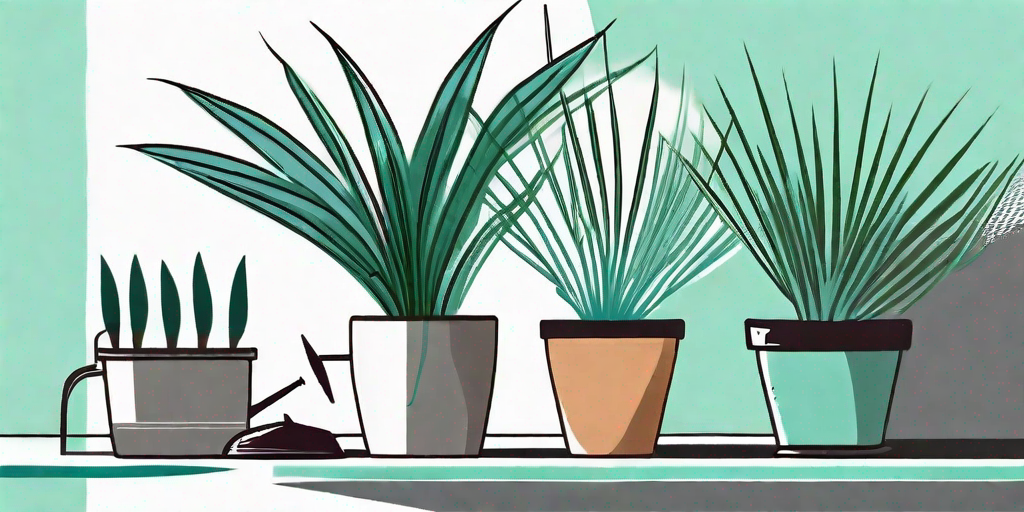
Ah, the Ponytail Palm, a plant that's more resilient than your last relationship and definitely more forgiving. This quirky houseplant, with its bulbous trunk and cascading ponytail of leaves, is a hardy survivor, but even it can benefit from a little TLC now and then. And by TLC, we mean repotting. Don't worry, it's not as scary as it sounds. In fact, it's easier than trying to keep a succulent alive (and we all know how that turned out).
Understanding the Ponytail Palm
Before we dive into the repotting process, let's get to know our green friend a bit better. The Ponytail Palm, also known as Beaucarnea recurvata, is not actually a palm but a succulent. Yes, you heard that right. It's as much a palm as a tomato is a vegetable (spoiler alert: it's a fruit).
Native to the deserts of East Mexico, this plant is used to harsh conditions. It's like the Bear Grylls of the plant world, storing water in its bulbous trunk to survive droughts. This makes it a low-maintenance houseplant, perfect for those of us who struggle to keep even a cactus alive.
Signs Your Ponytail Palm Needs Repotting
Now, you might be wondering, "How do I know if my Ponytail Palm needs repotting?" Well, there are a few signs to look out for. If your plant starts looking more like a sad mop than a cheerful ponytail, it's time to consider repotting.
Other signs include a cramped root system (if the roots are growing out of the drainage hole, it's definitely time), a top-heavy plant that keeps tipping over, or if the plant has simply outgrown its pot. Remember, size matters, especially when it comes to pots.
Materials You'll Need
Before we start, let's gather our tools. You wouldn't go into battle without your armor, would you? Here's what you'll need:
- A new pot (1-2 sizes larger than the current one)
- Cactus soil mix
- Perlite or pumice
- A tarp or newspaper (to keep your floor clean)
- Water
- Optional: a friend to help (or just to keep you company)
Step-by-Step Guide to Repotting
Alright, now that we're all set, let's get down to business. Follow these steps and your Ponytail Palm will be back to its perky self in no time.
Step 1: Remove the Plant from its Current Pot
First, gently remove the plant from its current pot. This might require a bit of wiggling and coaxing. Remember, be gentle. This is a plant, not a bottle of ketchup.
Step 2: Loosen the Root Ball
Next, gently loosen the root ball and remove any old soil. This is a good time to check the roots for any signs of disease or pests. If the roots look more like spaghetti than roots, it's time to call a plant doctor.
Step 3: Prepare the New Pot
Now, prepare your new pot. Make sure it has good drainage, as Ponytail Palms don't like wet feet. Mix your cactus soil with some perlite or pumice for added drainage. Fill the pot about one-third of the way with this mix.
Step 4: Repot the Plant
Place your plant in the new pot and fill around it with the soil mix. Make sure the plant is at the same depth as it was in the old pot. You don't want to bury it too deep or leave it too exposed.
Step 5: Water the Plant
Finally, water your plant thoroughly and place it in a sunny spot. Don't worry if it looks a bit shocked. It's just getting used to its new home. Give it some time and it'll be back to its old self.
Common Mistakes to Avoid
Repotting a Ponytail Palm is pretty straightforward, but there are a few common mistakes to avoid. First, don't overwater your plant. Remember, it's a desert dweller. It's more likely to survive neglect than overwatering.
Second, don't plant it too deep. The bulbous part of the trunk should be above the soil. Think of it as the plant's belly. You wouldn't want your belly buried in the sand, would you?
Finally, don't rush the process. Your plant might take some time to adjust to its new pot. Be patient. It's not a race.
FAQs
How often should I repot my Ponytail Palm?
Generally, Ponytail Palms should be repotted every 2-3 years. However, if your plant is happy and healthy, you can leave it in the same pot for up to 5 years.
Can I propagate my Ponytail Palm?
Yes, you can propagate your Ponytail Palm by removing and planting the offsets (baby plants) that grow at the base of the plant. However, this is a slow process and requires patience.
Why are the tips of my Ponytail Palm turning brown?
Brown tips can be a sign of underwatering, overwatering, or low humidity. Check your watering schedule and the humidity in your home. Remember, Ponytail Palms prefer dry conditions.
And there you have it, a comprehensive guide to repotting your Ponytail Palm. With a little patience and care, your plant will be back to its perky self in no time. And who knows, you might even develop a green thumb in the process.















